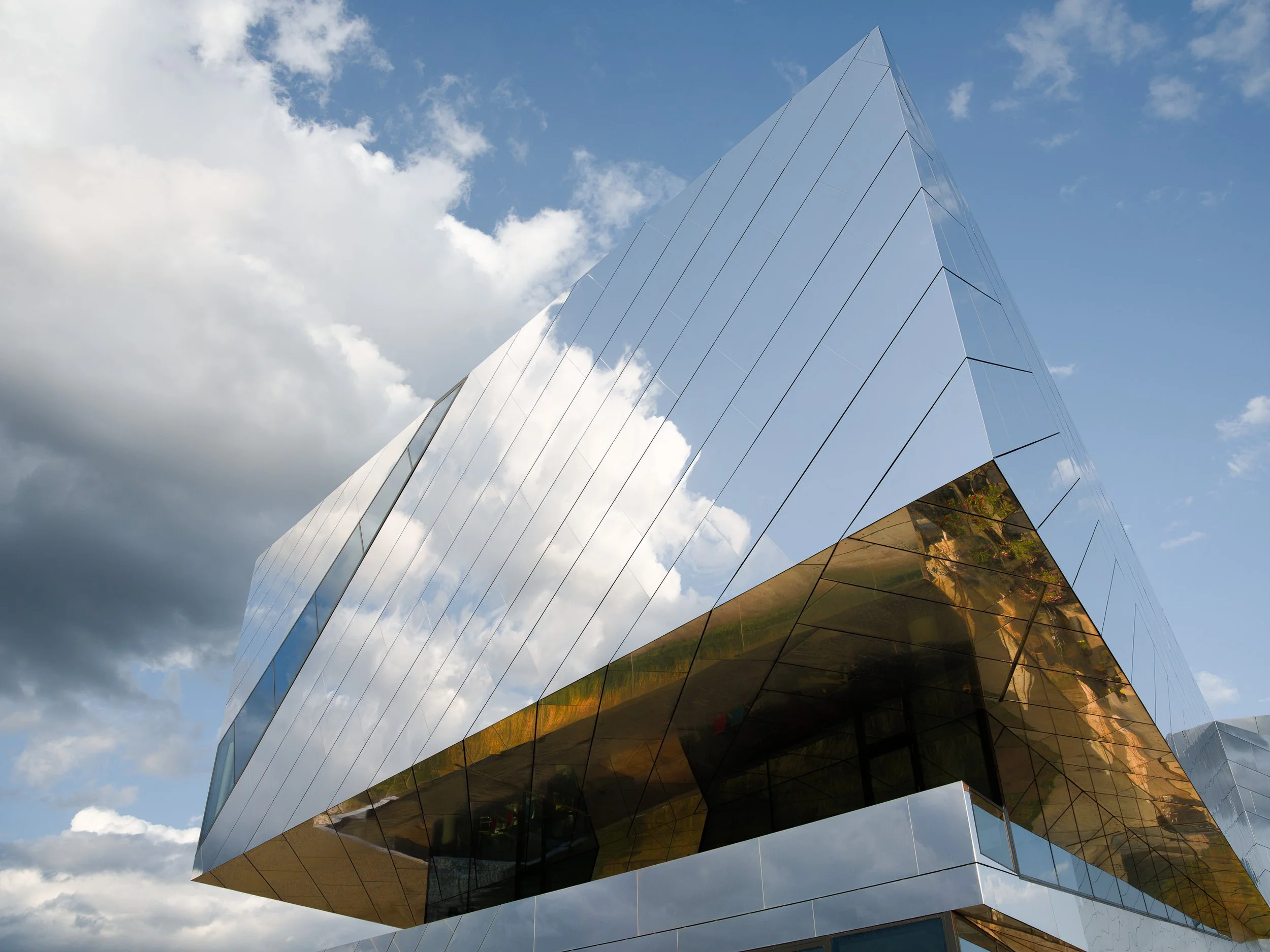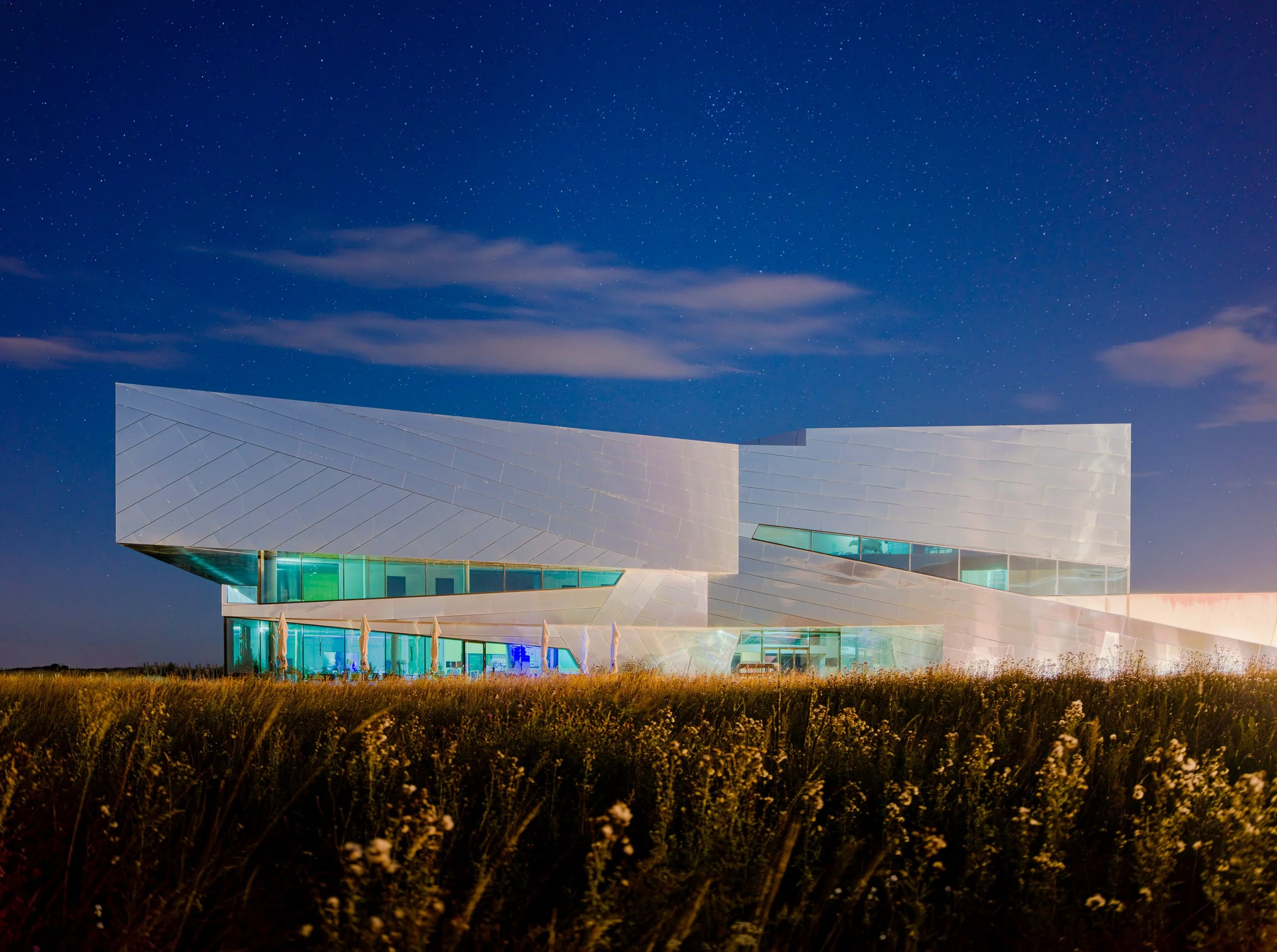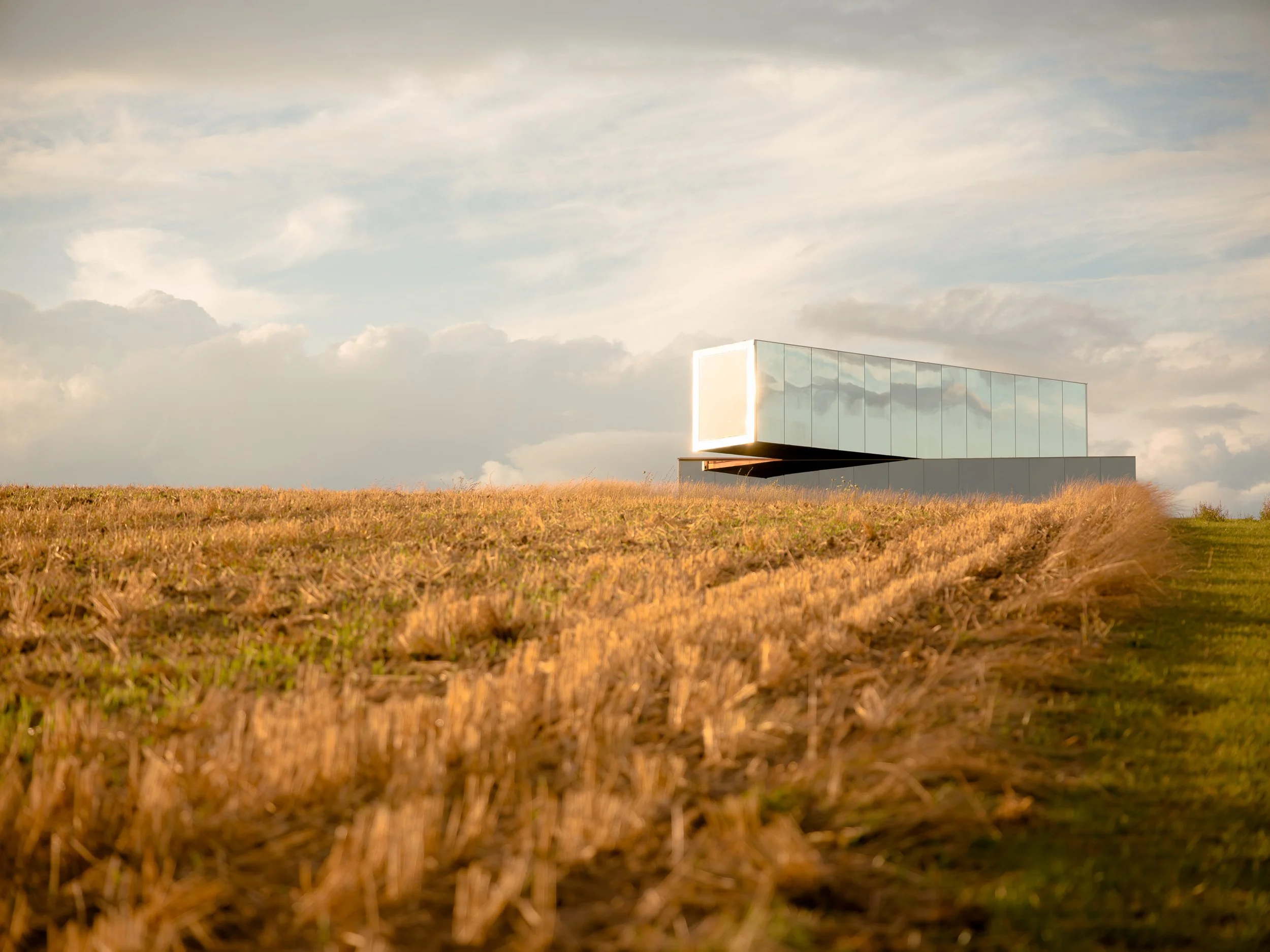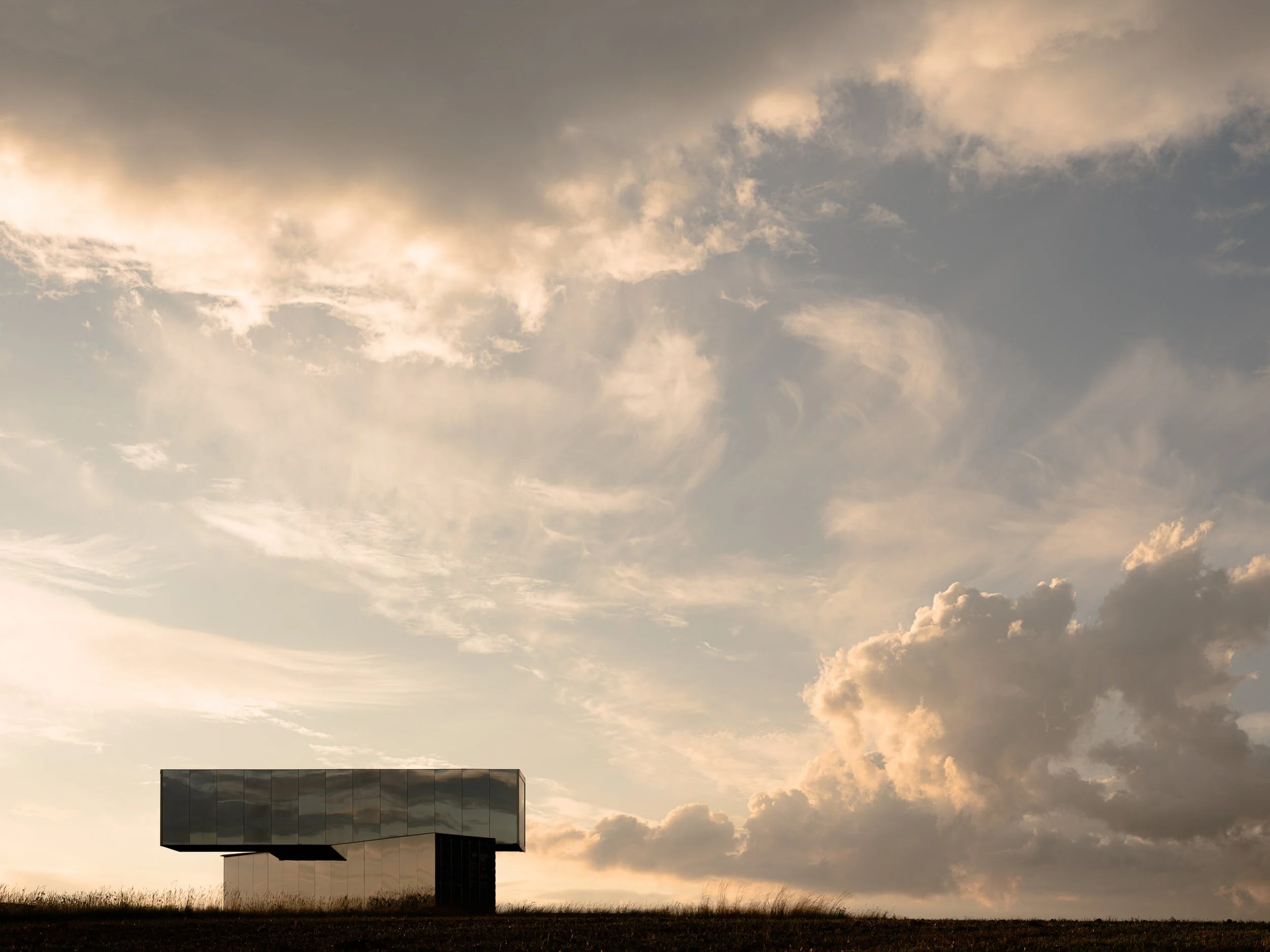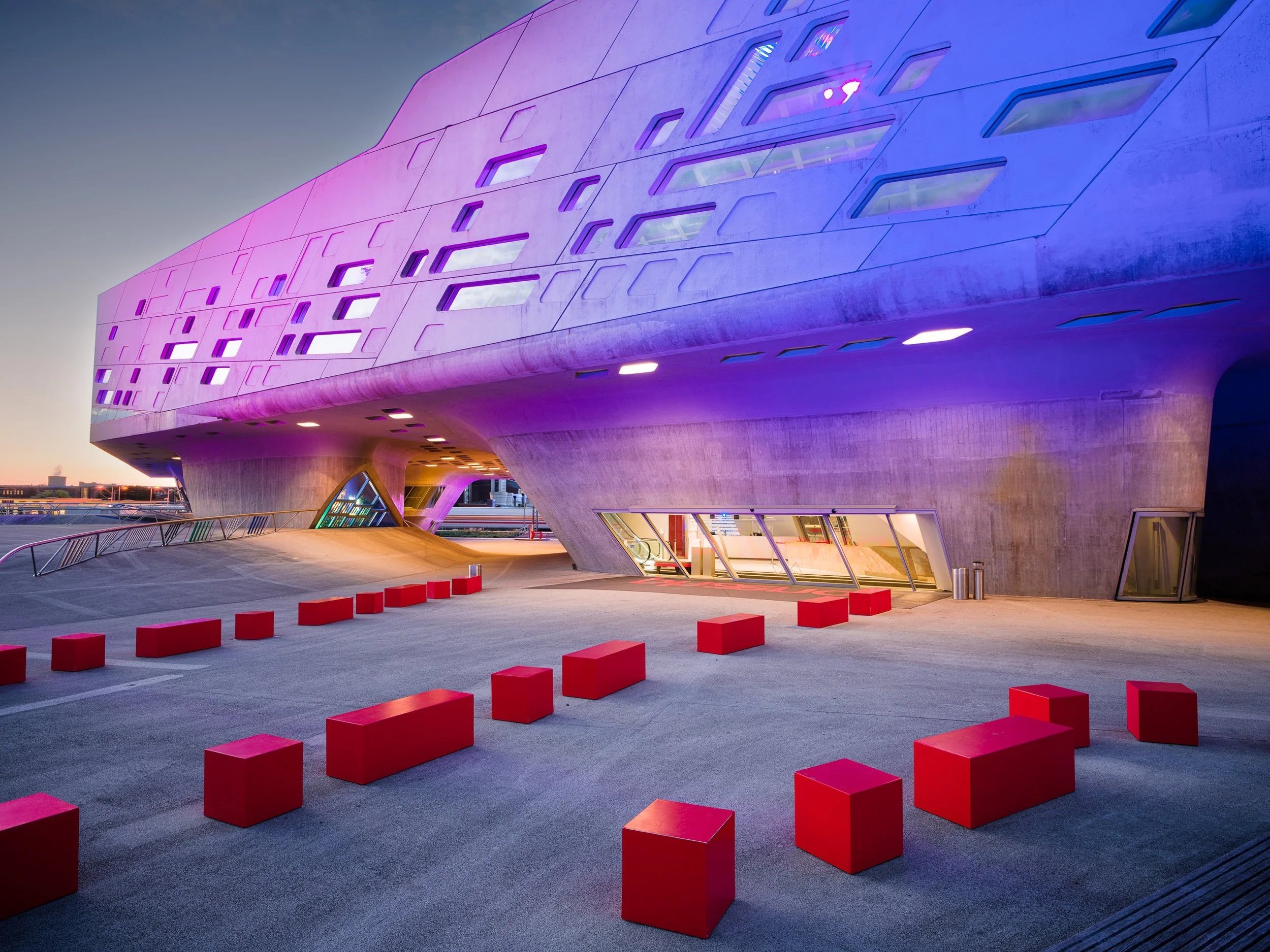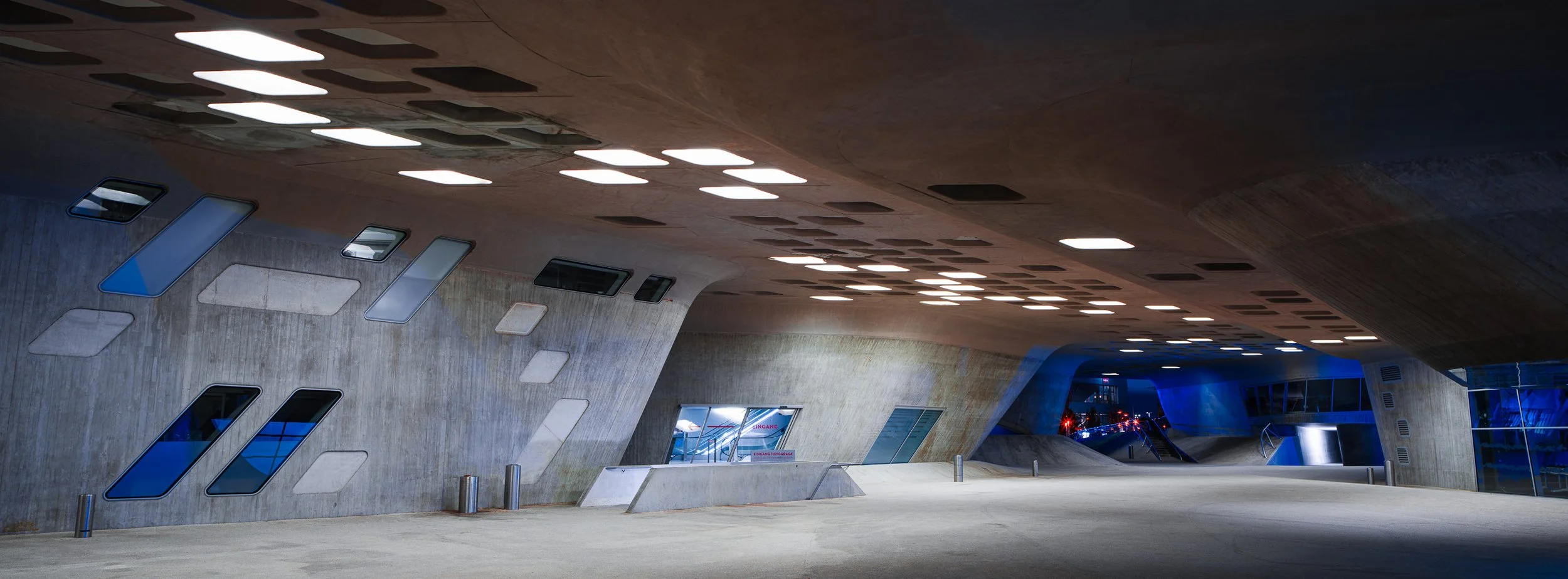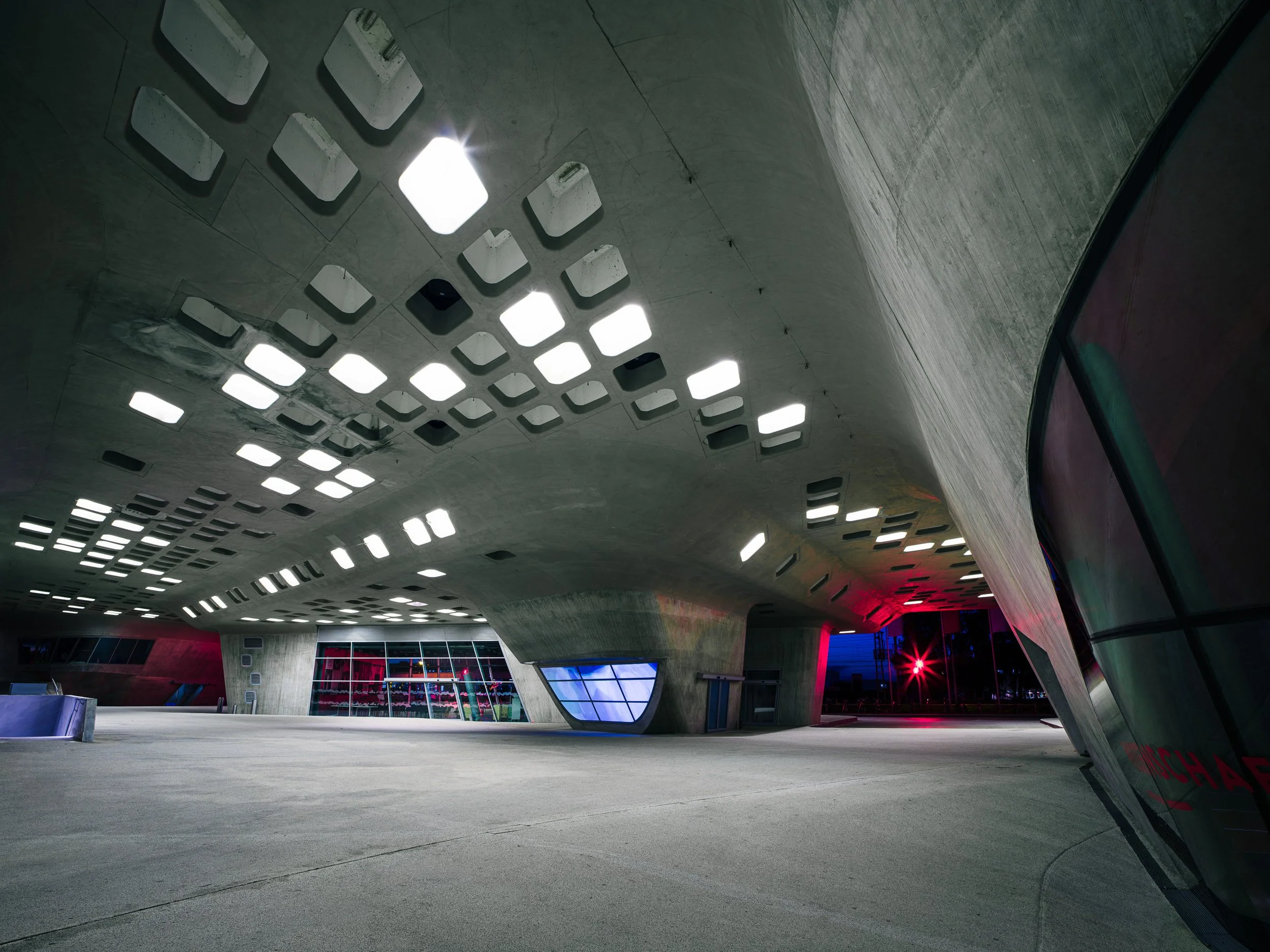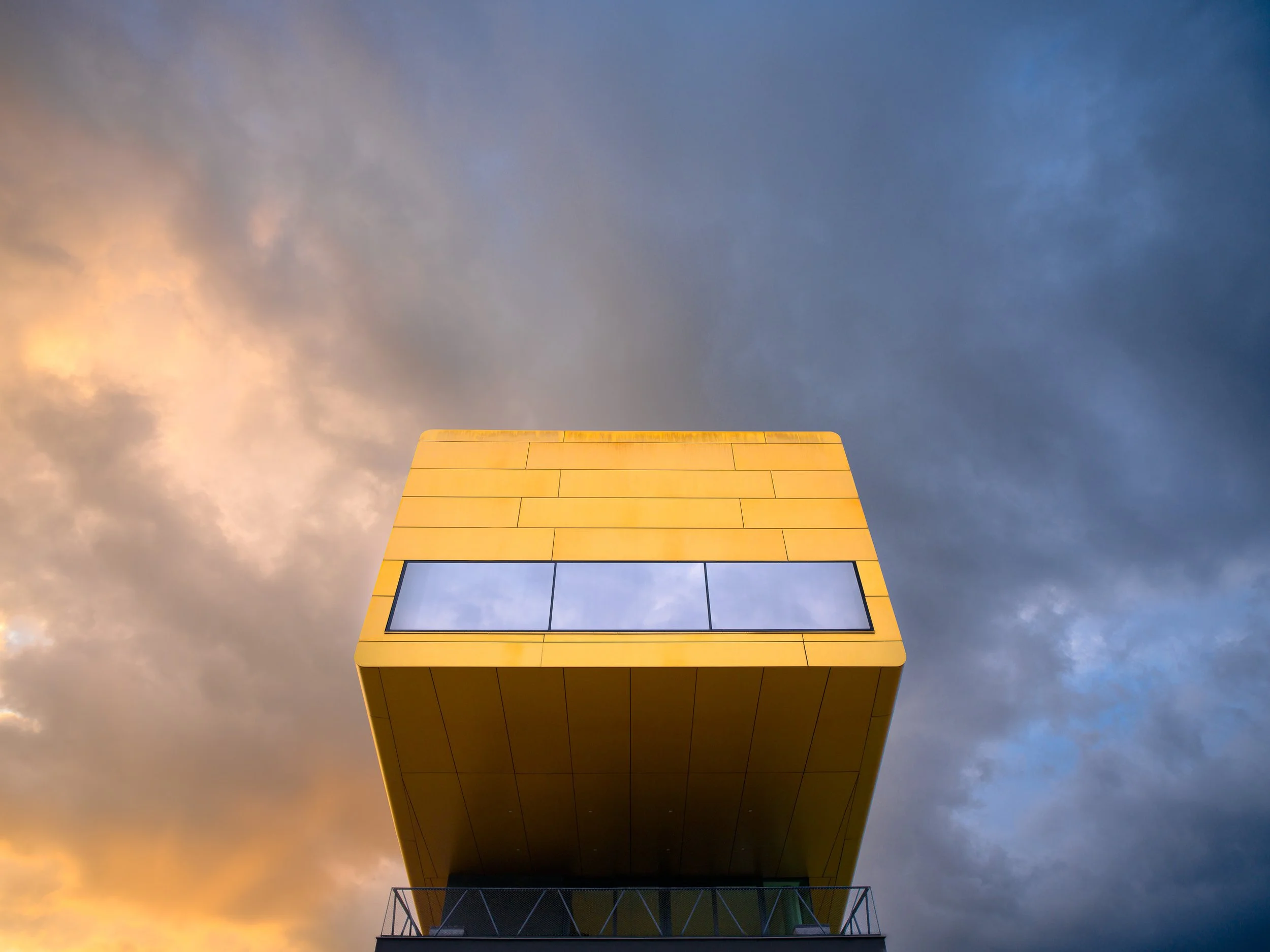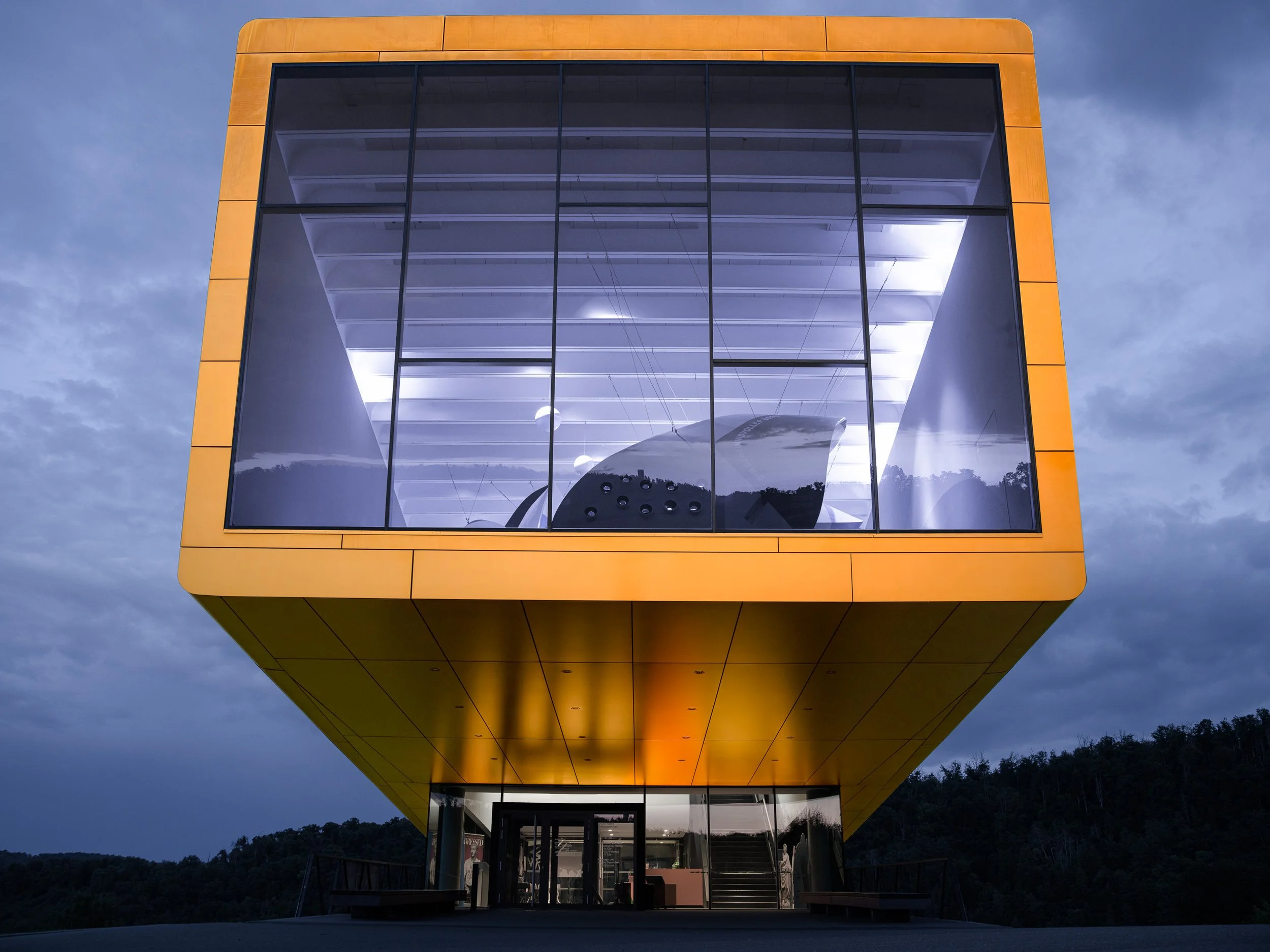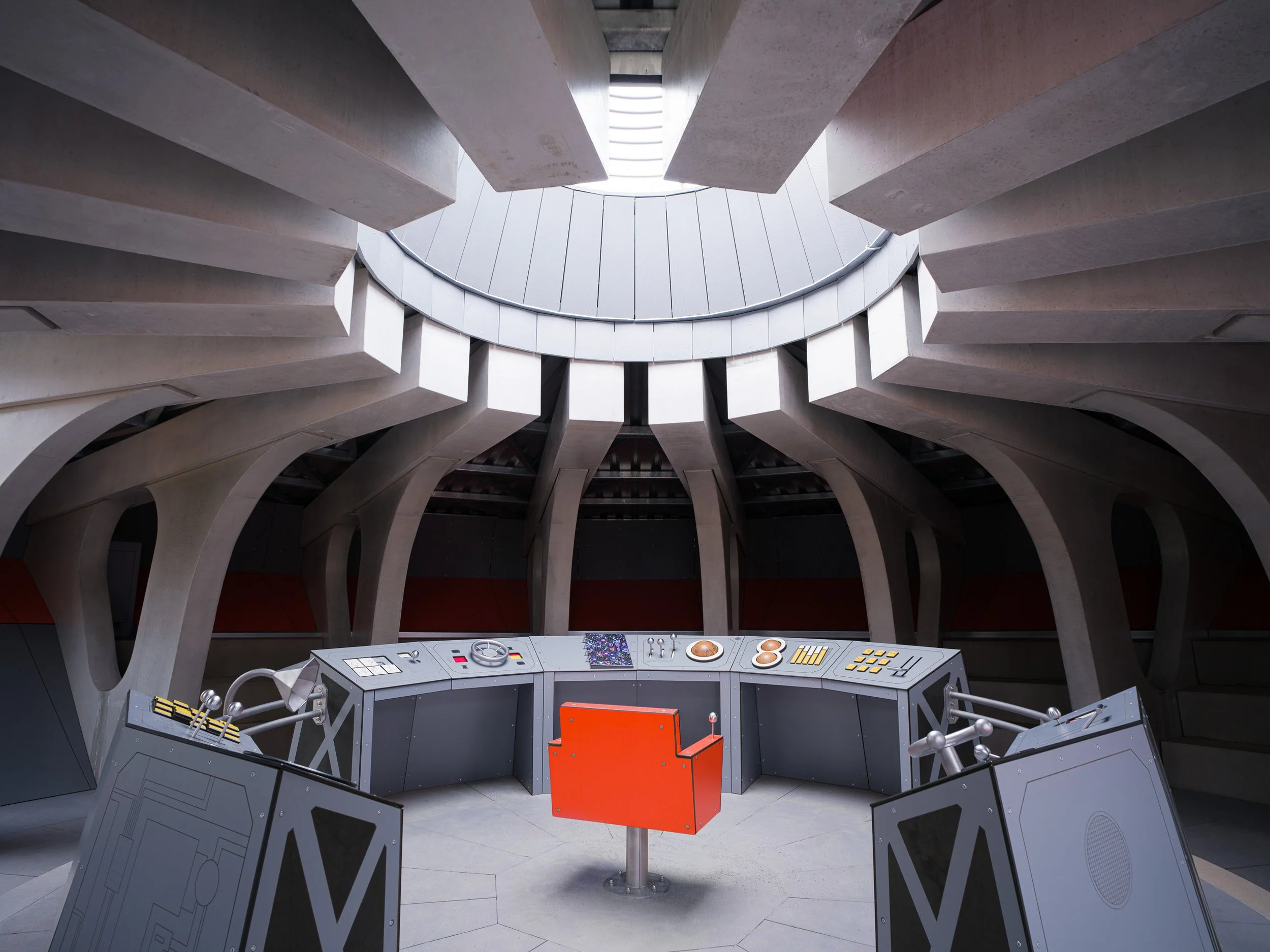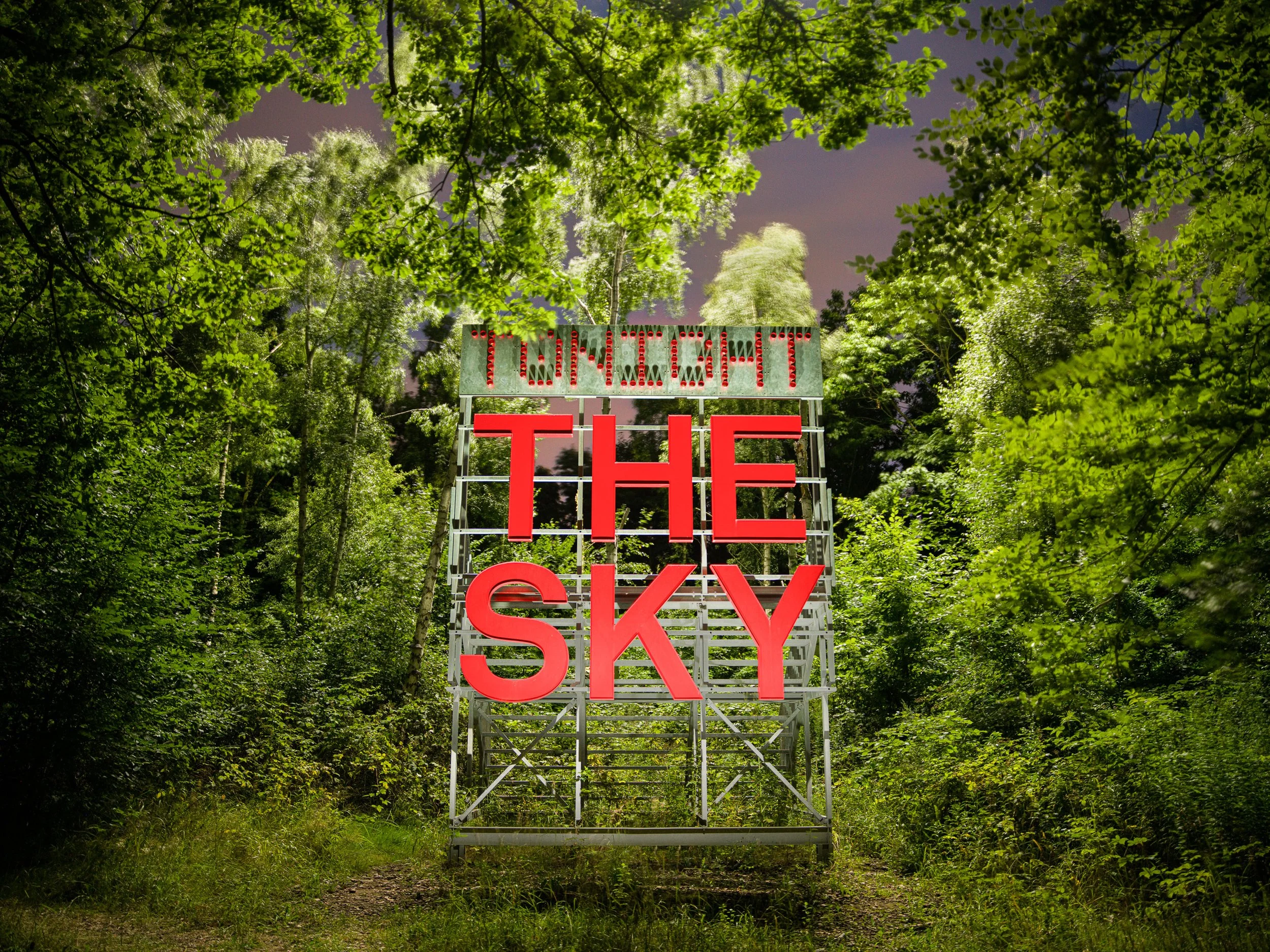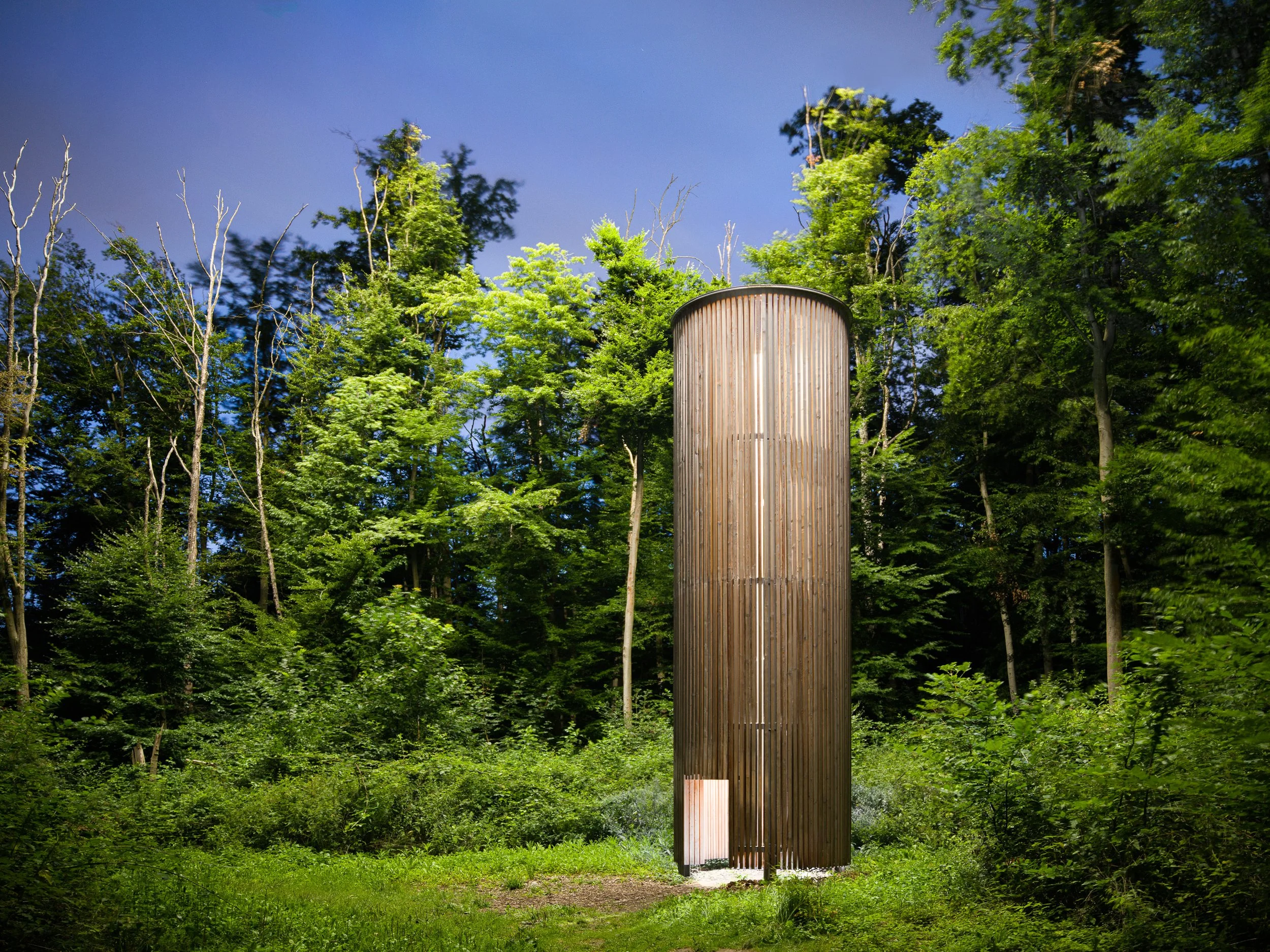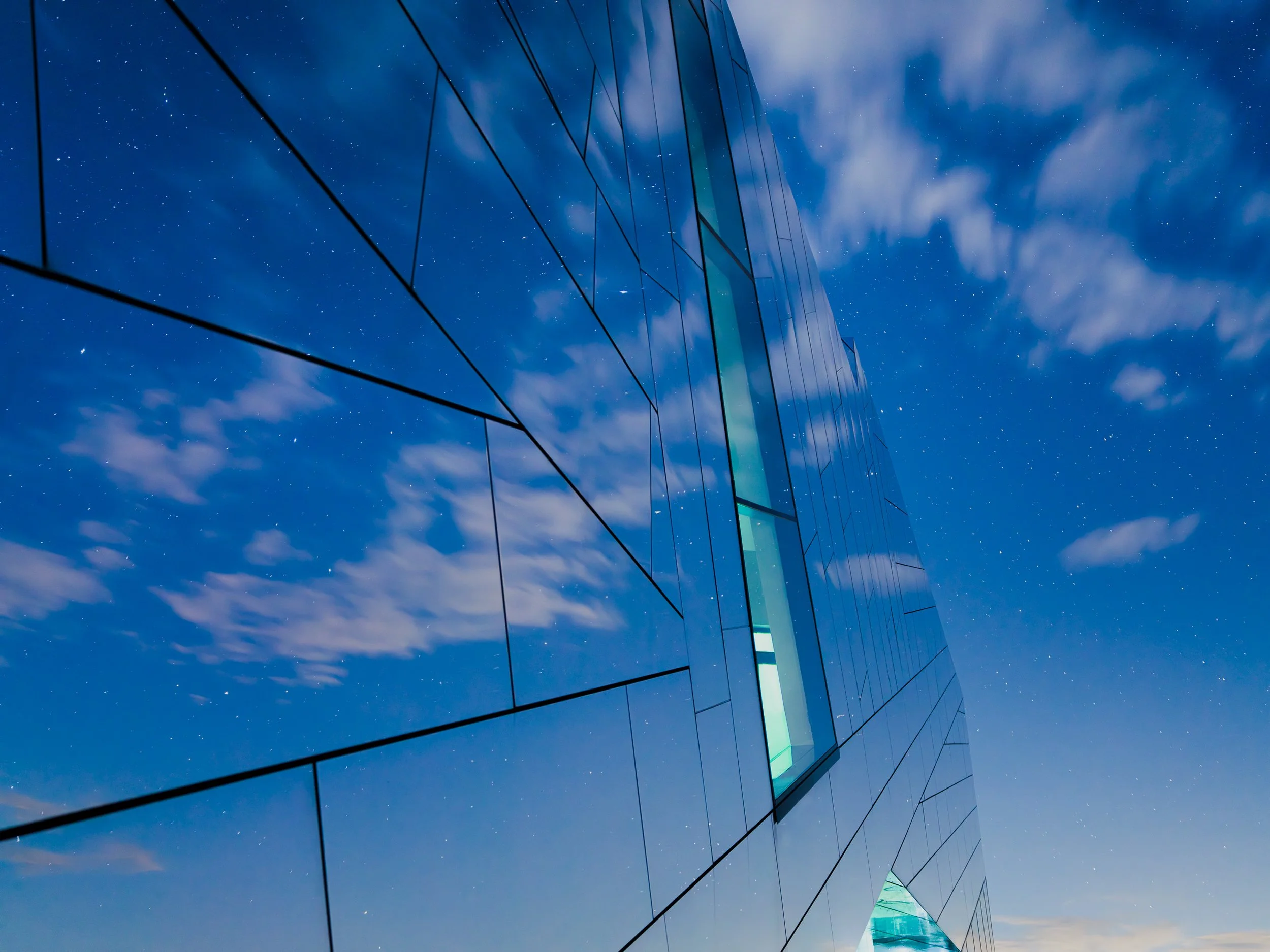
Hasselblad X2D II:
Modern Architecture in Central Germany
Location Germany Client Hasselblad Production 2025
How can a dedicated camera system evolve further in 2025? While many manufacturers are trying to upgrade their models with ever more video functions, the field of photography seems to have reached a technological plateau. For years, photographers have hardly been offered any real innovations. So, what could a new version of the Hasselblad X2D – one of the best cameras in the world – actually improve? In my work as an architectural photographer, I didn't feel I was missing anything: incredible image quality, robust construction, elegant handling, and one of the most intuitive user interfaces I have ever experienced. So, what does a manufacturer like Hasselblad do if it doesn't want to generate headlines with new video features – and the camera is already almost perfect at its core? The answer is the new Hasselblad X2D II. And I had the opportunity to put it through its paces before its official release.
Instead of traveling far away for this production, in the summer of 2025 I set out to document extraordinary architecture in untouched nature right on my doorstep. In Central Germany, I found exactly that: four impressive buildings that combine bold design with scenic tranquility. These included the Palaeon and the Nebra Ark by Holzer Kobler Architekten, the iconic Phaeno by Zaha Hadid Architects, and the poetic Mirror Ark by Kathrin Siebert. Each of these buildings tells its own unique story – and in the warm light of a long summer day, they unfolded their effect in front of my camera with impressive elegance. You don't always need to travel far to find world-class architecture.
What made this series special was not only the architecture – but also the new technical possibility that the X2D II offered me for the first time: the camera can now produce HDR images that achieve a whole new visual depth on modern screens. Luminous highlights, richer colors, more plasticity in the interplay of light and shadow – finally, the visual effect can be shown as it can otherwise only be felt on location. Initial results of this luminosity can already be seen on my Instagram channel. These shoots were far more than just a technical exercise for me. They were a return to what good photography can achieve: not only documenting architecture, but also making it tangible – far beyond its physical location.
In the following video, I share my first impressions of the new Hasselblad X2D II with you. I will discuss the new functions, show what surprised me – and what didn't – and draw my personal conclusion after the first few weeks of use:
Expected Innovations of the Hasselblad X2D II
Hasselblad has listened to its community – and it shows. With the X2D II, almost all frequently mentioned requests from the user base have been implemented. This sets Hasselblad apart from many competitors: instead of blindly following new trends, functions are specifically added that really make a difference in everyday use.
Finally: a joystick!
Hasselblad's first mirrorless camera with a joystick – big news for many. Personally, I've always found using the touchscreen to move the autofocus point perfectly adequate. But now the little "Stick of Joy" is here – and I have to admit, I'm using it more often than I thought I would.
The joystick can be used not only to move the focus point but also to adjust the image section in playback mode. Furthermore, you can now operate the camera's entire menu without the touchscreen – a real relief, especially in winter with gloves on.
More Freedom Through More Custom Buttons
There have also been improvements in customization. A total of 7 of the 14 buttons, as well as 3 adjustment dials (including the custom dial on the lens), can now be freely assigned – with over 35 different functions. The lens selector dial offers up to five assignment options, including switching between different focus targets for face or person recognition.
A new button has also been added below the joystick, and both the joystick itself and the front adjustment dial can now be pressed and assigned functions. The only minor drawback is that the buttons for Auto Exposure Lock and the AF-D mode still cannot be individually assigned – which is a shame, as I personally hardly use these two functions.
Auto-ISO in manual mode.
The X2D Mark II now allows you to manually set the shutter speed and aperture – while simultaneously leaving the ISO selection to the camera. This is a huge gain in flexibility, especially in changing lighting conditions. It's a feature that many professionals have been missing for years.
How I set up my camera
If you want to know how I set up my X2D II for maximum convenience and fast handling, I recommend my complete setup guide for the X2D and X2D II, which you can find as a digital course on my website. This allows you to get started directly with your new camera – without long trial-and-error sessions and searching through the menu.
Paläon
Architect Holzer Kobler | Year of Construction 2013 | Type Museum
The photographic documentation of the Paläon presented me with several challenges. Strong wind repeatedly drove dense clouds in front of the low-lying afternoon sun. A 30-second window of light was followed by 15 minutes of shadow – a game of waiting, observing, and reacting. My focus was on the reflective facade, which creates an exciting dialogue between the futuristic-looking building and its surroundings. Reflective materials require special care in image composition: it's not just about shaping the object itself, but also about deliberately controlling the reflections – without distracting elements in the image section.
To make the composition more lively, I experimented with a mixture of long exposure and wide aperture. The grass moving in the wind blurs into a dynamic surface, which forms an exciting contrast to the clear, sharp-edged lines of the architecture. After sunset, the new Hasselblad X2D II showed its best side: thanks to the huge sensor, I was able to make every single reflection of the stars visible, which stand out from the night sky in the dark blue facade mirror of the building.
The new display of the Hasselblad X2D II
I love looking at the display from above – especially for ground-level architectural photos. With the previous model, however, the electronic viewfinder always blocked part of the screen. A constant source of frustration that often led me to simply leave the display folded in. (A "Dynamic Island" that blocks my view – I already have enough of that on my iPhone and MacBook.) With the X2D Mark II, this design flaw has finally been fixed. The new display folds further away from the housing and can now also be fully positioned upwards at a 90° angle – resulting in a true digital waist-level viewfinder experience. For me personally, this is probably the most important improvement of all. In addition, the display can now also be tilted downwards by 45° – ideal for overhead shots. When folded in, it looks almost identical to its predecessor, and the folding mechanism still feels high-quality and robust. The only minor drawback is that the tilt into portrait format is still missing – but perhaps that's exactly what's coming with the next generation: Hasselblad X3D? The name would at least be promising.
The display itself has also been completely redesigned. The size remains the same at 3.6 inches and 2.36 MP resolution, but it now uses the significantly expanded DCI-P3 color space, which has long been standard in video production. The maximum brightness is an impressive 1400 nits, the contrast ratio is 2,000,000:1. The display is noticeably more brilliant, colors appear richer, shadows deeper. In addition, the display brightness now automatically adjusts to the ambient light – finally. Why they didn't just go with AdobeRGB right away? Good question... but DCI-P3 is at least very close.
Improved Autofocus
The number of phase detection points has been increased from 294 to 425. Another new feature is that the size of the focus field can be freely selected – from small to expanded to a custom area. I haven't seen the latter in this form in any camera yet – an exciting detail that should be very useful for studio and product photographers.
More importantly: there is finally a continuous autofocus with subject recognition. People, animals, and vehicles are now recognized and reliably tracked. This is less relevant for my architectural photography – but when testing with my assistant for a studio portrait, I was honestly impressed: the focus sticks to the subject as if glued. My impression: Hasselblad no longer has to hide behind Sony or Canon in this regard. The integration of a LiDAR sensor should play a decisive role here – as well as the connection to DJI. In addition, an AF illuminator supports focusing in dark environments. Important to know: the new AF-C mode only works with the most modern lens series – i.e., V-series, E-series, 28P, and 75P.
Spiegelarche
Architect Kathrin Siebert | Year of Construction 2023 | Type Art Installation
The urge that people feel to shape their living space through architecture never ceases to fascinate me. The Spiegelarche is a purely private project that is planned, built, and managed by Mrs. Siebert on her private land. The Arche serves as a meeting place, for art mediation, and as a mirror of ourselves and our relationship with nature and our fellow human beings.
During a wonderful sunset, I walked around the building, which stands freely on a harvested wheat field as an eye-catcher, and looked for the best angles to merge the architecture with its surroundings. Reflective surfaces bring a building to life and change it again and again in harmony with the weather. Thus, every shot of it is unique, the manifestation of a never-repeating moment.
Surprising new features of the Hasselblad X2D II
The new HDR workflow
Hasselblad promotes the X2D Mark II as the first medium format camera with a true end-to-end HDR workflow. But wait – HDR? Don't all 16-bit RAW files have that anyway? Technically speaking: yes. But that's not the point. This new feature is not about the RAW workflow, but about the HDR output in the compressed formats JPEG (Ultra HDR) and HEIF. And I admit: as soon as I hear the word “JPEG” as a professional photographer, my brain usually goes into standby mode. I take all my pictures in RAW – so what's the point?
Let me elaborate briefly: A few months ago, I was a guest at a live talk in the Leica Store Hamburg. The question was asked how many of those present earn money with their camera. There were about 200 people in the room – and only about 15 hands went up. I suspect the distribution is similar at Hasselblad. And that brings a new perspective: Should you, as an amateur, use compressed formats such as JPEG or HEIF?
From personal experience: Absolutely! When I take photos on vacation, family and friends at home would prefer to see a few pictures the same evening. And in order not to develop 50 RAW files in Phocus Mobile during dinner, I simply use the smaller HEIFs. A quick tap on “Auto-Enhance” in Apple Photos – done.
And this is exactly where the new HDR feature suddenly makes sense. These JPEGs and HEIFs look fantastic on modern HDR screens – such as iPhones, iPads or MacBooks – with more depth, more luminosity, and stronger contrast. So, if you want to show your pictures not only in print but also digitally, the X2D II gives you a new level of quality.
Improved IBIS
Now, just between us – did someone at Hasselblad really say: “Honestly folks, 7 stops of image stabilization is not enough for me. I want to be able to expose for 3 seconds handheld!” Whoever that was – challenge accepted! The X2D II now offers incredible 10 stops IBIS. With this, Hasselblad has officially retired the tripod – or at least made it shaky. In initial tests with the new XCD 38–100 mm E, I was already able to confirm: At 38 mm to 100mm, exposure times of up to 0.5 seconds are feasible – at least with a steady hand. And even in windy weather on a tripod, the stabilization can help to compensate for unwanted micro-movements. Nevertheless, I remain a loyal user of my tripod – but the possibilities are growing. Perhaps the IBIS performance was also extended because the base ISO value was reduced by another third of a stop to ISO 50. This is – alongside the Phase One IQ4 – currently the lowest base ISO of all camera manufacturers. Especially in sunlight and with an open aperture, this is a real advantage: more freedom for the bokeh without reaching the shutter speed limit.
Market-leading dynamic range
With now 15.3 stops, the X2D II is, according to the data sheet, the new champion among cameras – about a third of a stop more than its predecessor and thus an advantage over the competition from Fujifilm. Whether this is visible in practice? Other testers should philosophize about that – I can only say: The files are extremely resilient, especially in difficult lighting conditions.
And where there is light, there is also... well, a small downside: The continuous shooting speed has been reduced from 3.3 fps to 3.0 fps. This probably makes the X2D II the slowest modern camera on the market. For me personally, however, this is irrelevant – my subjects don't run away. And if they do, focus and image composition help more than an extra half a frame per second.
Phaeno
Architect Zaha Hadid | Year of construction 2005 | Type Museum
Even though the Phaeno in Wolfsburg does not quite fulfill the project description of modern architecture in a natural environment, I could not help but take some pictures of this grandiose building in the evening twilight. The unique design language of Zaha Hadid, which I have already documented in several projects, is immediately apparent here as well. The columns merge with the ceiling through soft transitions, while the jagged roof edge of the building cuts sharply through the sky. Train station, parking garage, museum and meeting place merge into a futuristic-looking figure that could have come straight from the universe of Blade Runner cyberpunk. The compressed images here in the gallery are hardly a reference for the incredible color depth that the Hasselblad X2D II was able to capture from the colorfully illuminated facade in the shimmering evening light. Intense red meets bright magenta, green and blue, while the setting sun and interior lighting fight against the dark shadows of the facade. There is hardly a more difficult subject to capture in a picture, but especially in the new HDR mode of the camera, every single pixel convinces me.
Surprising new features of the Hasselblad X2D II
The new HDR workflow
Hasselblad promotes the X2D Mark II as the first medium format camera with a true end-to-end HDR workflow. But wait – HDR? Don't all 16-bit RAW files have that anyway? Technically speaking: yes. But that's not the point. This new feature is not about the RAW workflow, but about the HDR output in the compressed formats JPEG (Ultra HDR) and HEIF. And I admit: as soon as I hear the word “JPEG” as a professional photographer, my brain usually goes into standby mode. I take all my pictures in RAW – so what's the point?
Let me elaborate briefly: A few months ago, I was a guest at a live talk in the Leica Store Hamburg. The question was asked how many of those present earn money with their camera. There were about 200 people in the room – and only about 15 hands went up. I suspect the distribution is similar at Hasselblad. And that brings a new perspective: Should you, as an amateur, use compressed formats such as JPEG or HEIF?
From personal experience: Absolutely! When I take photos on vacation, family and friends at home would prefer to see a few pictures the same evening. And in order not to develop 50 RAW files in Phocus Mobile during dinner, I simply use the smaller JPEGs. A quick tap on “Auto-Enhance” in Apple Photos – done.
And this is exactly where the new HDR feature suddenly makes sense. These JPEGs and HEIFs look fantastic on modern HDR screens – such as iPhones, iPads or MacBooks – with more depth, more luminosity, and stronger contrast. So, if you want to show your pictures not only in print but also digitally, the X2D II gives you a new level of quality.
Improved IBIS
Now, just between us – did someone at Hasselblad really say: “Honestly folks, 7 stops of image stabilization is not enough for me. I want to be able to expose for 3 seconds handheld!” Whoever that was – challenge accepted! The X2D II now offers incredible 10 stops IBIS. With this, Hasselblad has officially retired the tripod – or at least made it shaky. The sample images in the official reels, which were taken entirely handheld? Finally sharp to the corners. In initial tests with the new XCD 38–100 mm, I was already able to confirm: At 38 mm to 100mm, exposure times of up to 0.5 seconds are feasible – at least with a steady hand. And even in windy weather on a tripod, the stabilization can help to compensate for unwanted micro-movements. Nevertheless, I remain a fan of my tripod – but the possibilities are growing. Perhaps the IBIS performance was also extended because the base ISO value was reduced by another third of a stop to ISO 50. This is – alongside the Phase One IQ4 – currently the lowest base ISO of all camera manufacturers. Especially in sunlight and with an open aperture, this is a real advantage: more freedom for the bokeh without reaching the shutter speed limit.
Arche Nebra
Architect Holzer Kobler | Year of construction 2007 | Type Museum
I have a long-standing connection with the Arche Nebra. A few years ago, I took a nighttime long-term exposure here for over 8 hours, in which you could observe the movement of the stars. This time, the focus was on the entire experience surrounding the discovery site of the famous Nebra Sky Disc. A new playground has just opened right next to the Arche, which looks like the command center of a spaceship. On my 30-minute walk through the dark forest, I passed various observation points that could only be distinguished from their black surroundings by a special lighting method. It was an impressive process how suddenly the green of the leaves shone intensely - a way of seeing our world that is only possible in photography.
My conclusion on the Hasselblad X2D II
Despite all the improvements, Hasselblad has unfortunately not fulfilled all of my wishes: I still miss a real black and white mode as a creative alternative to the – admittedly beautiful – Hasselblad Natural Color Solution. A swivel display for portrait shots would also be a real gain. Another point: I would like an option for smaller RAWs or HEIFs with reduced resolution. Because not every picture has to be 200 MB in size – especially in the private sector, a little more flexibility in the file format would be desirable. And then there's the perennial issue: No support for Capture One, my preferred editing program for years.
So what do all these upgrades mean specifically – for you and for me? The answer to the question asked at the beginning, “Can pure photo cameras be further developed in 2025?” is a resounding yes! The X2D Mark II is not a radical technological leap, but a consistent further development – a camera that listens to user feedback and optimizes where it counts. The original X2D was already a well-thought-out tool with iconic design and excellent image quality. With the X2D II, Hasselblad has once again significantly improved the user experience. Features such as the new joystick, the fully folding display, Auto-ISO in manual mode or the continuous autofocus with subject detection make the camera even more intuitive – especially for dynamic subjects such as people, animals or vehicles. For me as an architectural photographer, these are nice convenience functions, but not a compelling reason for an upgrade. However, anyone who regularly works with moving subjects will find real added value here.
If you are still looking for a direct comparison between the X2D Mark II and its predecessor model – or a detailed review of the new Hasselblad XCD 35–100 mm E zoom lens – then subscribe to my YouTube channel now and leave me a like. The videos are already in the works.
In closing, I would like to take you once again to the locations where I rigorously tested the new X2D Mark II. The Paläon, the Nebra Ark, the Spiegelarche, and the Phaeno are not only photogenic icons of modern architecture, but they are also publicly accessible and definitely worth a visit. These architectural highlights in the heart of Central Germany impressively demonstrate how architecture and landscape can interact. For me, modern architecture in the countryside is one of the most beautiful forms of lived sustainability, and at the same time, the perfect destination for your next short trip or weekend getaway.
If you are overseeing a project that requires documentation—be it a new cultural building, a hotel project, a public space, or innovative industrial architecture—then please send me an inquiry by email to info@albrechtvoss.com. Together, we can develop a customized photographic production that showcases your building in all its design quality and appeals to an international audience that lives and loves architecture through expressive imagery.
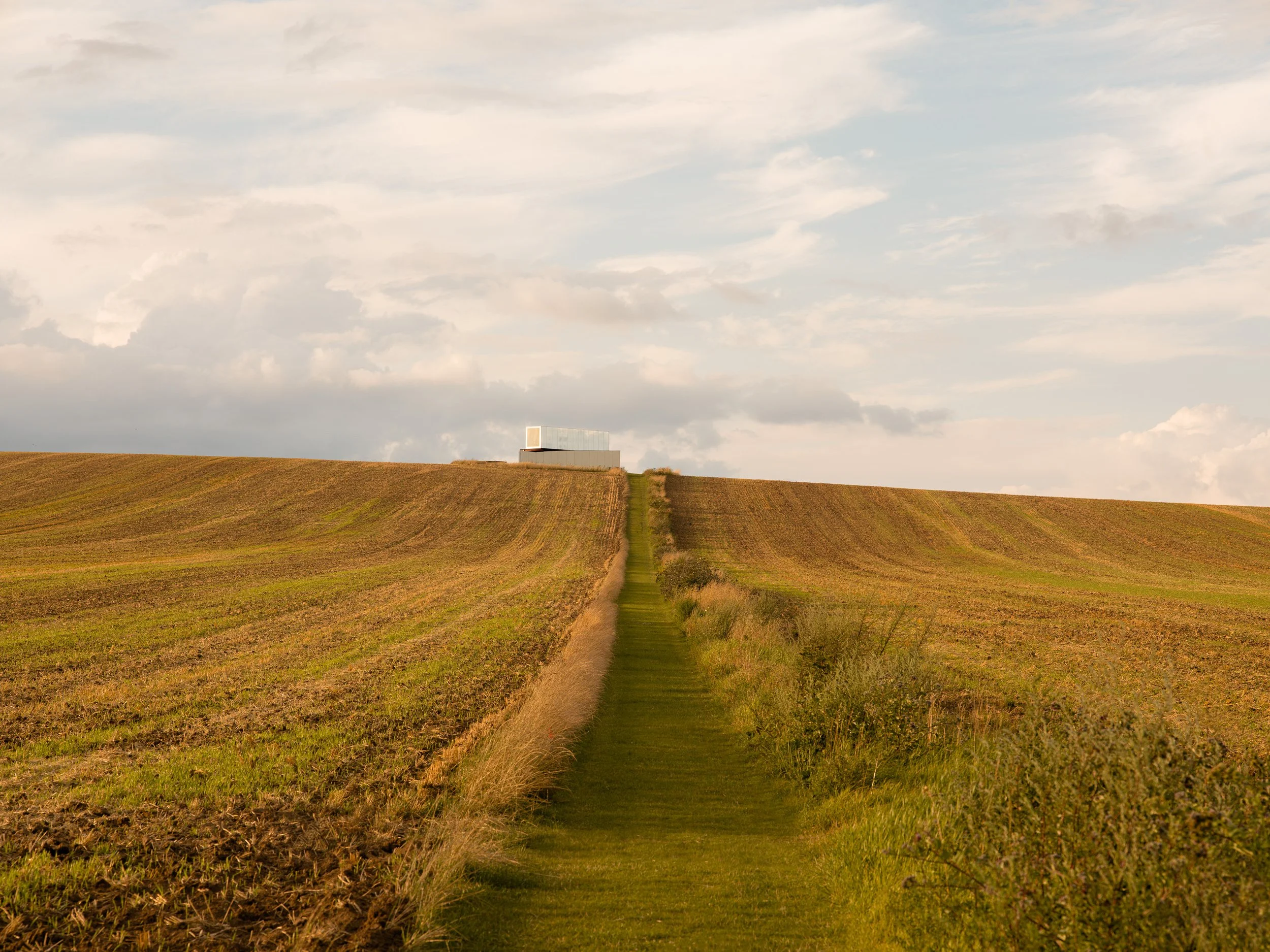
Equipment
Camera
1st Lens
2nd Lens
Tripod
Software



